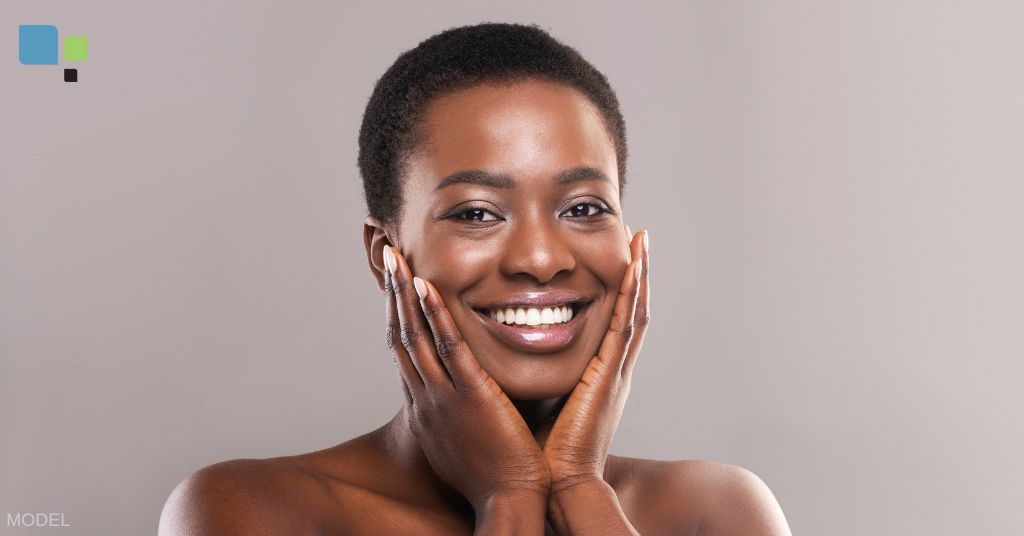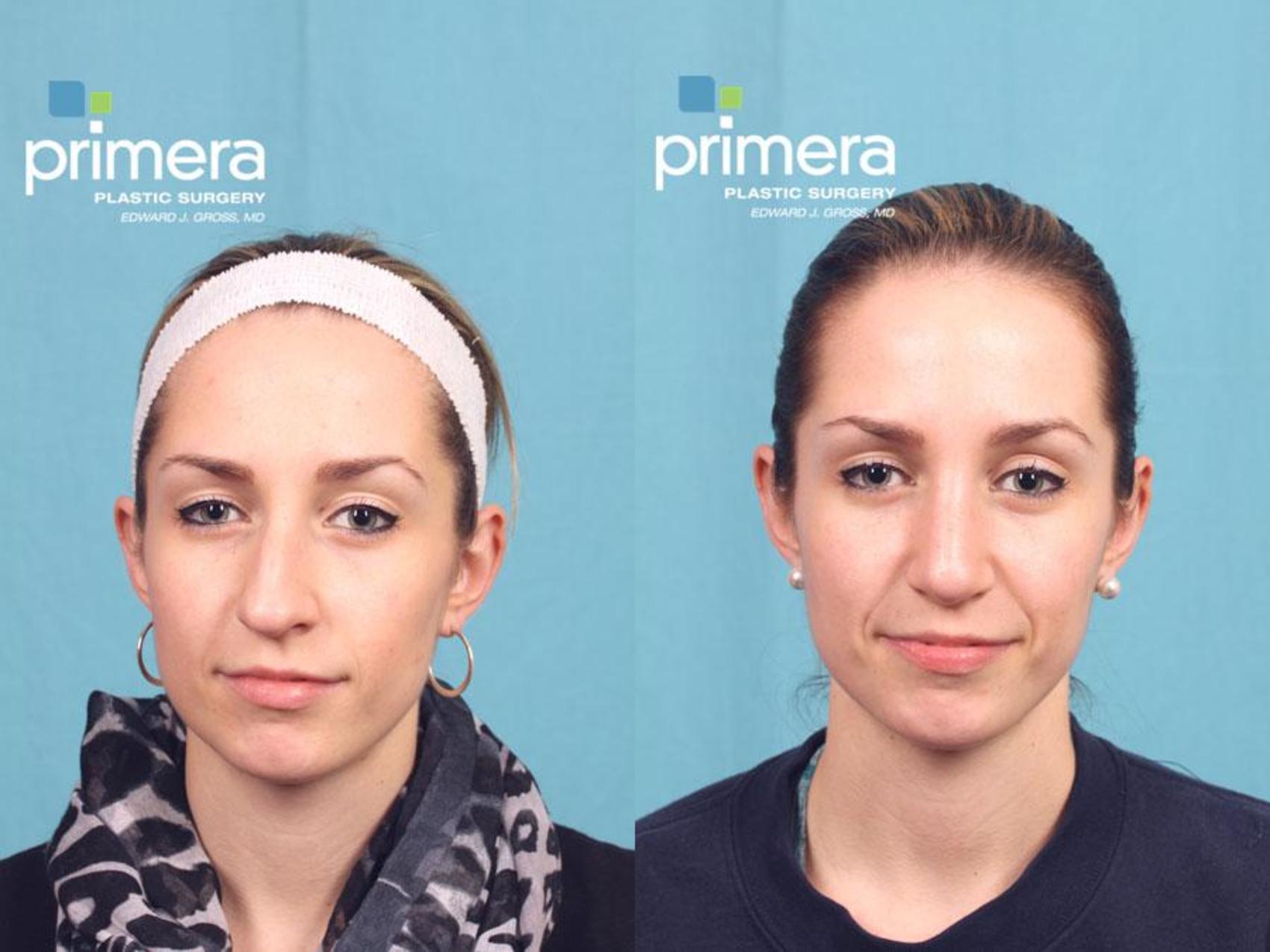
Although 90% to 95% of rhinoplasties produce successful functional and cosmetic outcomes, a small percentage of patients will pursue revision rhinoplasty to get the results they desire. This secondary surgery can correct and refine the original results or address any nasal trauma or changes that may have developed afterward.
Although the recovery process for revision rhinoplasty will follow a similar trajectory as the original (“primary”) procedure, the delicate nature of a rhinoplasty correction brings additional complexities and considerations to the healing process. This blog post will guide you through what to expect from your nose revision surgery.
Primary vs. Revision Rhinoplasty Recovery
Recovering from a primary rhinoplasty procedure versus a revision surgery typically differs in the following ways:
Tissue Changes and Scarring
A “nose job” revision will likely need to address scar tissue and changes in the nasal anatomy related to the previous surgery (such as too much or too little tissue removed and structural complications such as bumps and asymmetry).
These issues add complexity to the revision procedure, which can lead to a longer recovery period than the primary rhinoplasty.
Tissue Healing
Since revision rhinoplasty involves working with altered nasal tissues and scar tissue, the healing process may be slower and more unpredictable than the patient’s first rhinoplasty. For example, the tissues may take longer to settle into their final shape.
Additional Cartilage and Healing Sites
When too much tissue has been removed (over-resection), I may need to use cartilage from the nasal septum, ears, or enduragen implants to restore volume and structural integrity to the nose. As a result, the patient may have multiple sites that require healing and monitoring.
Swelling and Bruising
Although swelling and bruising are to be expected after surgery, revision rhinoplasty may cause more severe swelling due to the disruption of scar tissue and altered tissue planes.
Managing Emotions and Expectations
The emotional side of recovery is often overlooked yet is just as important as the physical side. Patients undergoing revision rhinoplasty tend to have specific expectations and concerns related to their previous surgery—and how this secondary procedure might go.
Our practice uses special imaging technology to help you preview your rhinoplasty results. These images help you set realistic expectations and take out a lot of the guesswork and anxiety around the final results. Our patients overwhelmingly say that their actual surgical outcome is close to (and usually better than!) their projected results from the images.
Another way to build trust and confidence in your surgical journey is to choose a revision rhinoplasty specialist. In my quarter-century of practice, I can confidently say that the best revision rhinoplasty surgeon is one who:
- Specializes in reconstructive surgery, particularly surgery of the face (look for membership in the American Academy of Facial Plastic and Reconstructive Surgery)
- Has extensive training, experience, and expertise in rhinoplasty and revision rhinoplasty (look at before and after photos to get a sense of case volume and the results the surgeon can achieve)
- Goes the extra mile to understand your unique nasal anatomy when planning out your surgery (such as preview imaging or CT scans)
- Makes you feel comfortable, excited, and well-informed about your procedure
Recovery Timeline for Revision Rhinoplasty
Your revision rhinoplasty recovery will typically hit the following milestones:
Days 0 to 7
You will likely experience swelling, bruising, some discomfort, and stuffiness. Keep your nasal cast dry and your head elevated while you sleep. Avoid wearing glasses and blowing your nose.
Ice and pain relievers are encouraged and well-tolerated during these early days of recovery.
Weeks 1 to 2
Most patients return to work during this period. Swelling may still be noticeable, and there may still be some residual bruising around the nose and eyes. Continue to keep your head upright and follow all postoperative instructions.
Weeks 2 to 4
Most of the swelling and bruising dissipates by the end of the first month, and you should see noticeable improvements in how your nose looks.
Months 1 to 3
Your nose will continue to undergo subtle changes in appearance as the swelling subsides and your nasal tissue heals and “settles” into place. You can gently re-engage with most daily activities, though strenuous exercise and contact sports may still be limited.
Months 4 to 6 (and Beyond)
The final stages of recovery involve the refinement of your results as residual swelling dissipates over a 12 to 18-month period. By this time, you should be back to most (if not all) of your usual routines and enjoying your attractive new nose.
Common Questions About Revision Rhinoplasty Recovery
Below, we answer some of the most common questions related to recovery after revision rhinoplasty.
When Can I Return to Work and Social Activities?
Although most patients feel physically well after a week, the “social downtime” can take 10 to 14 days post-surgery before the patient feels ready to be seen by others.
Icing the face, keeping the head elevated, and not disturbing the nasal splint or surrounding areas can reduce swelling and bruising and encourage quicker healing.
Depending on the activity, you may need to postpone social engagements further due to possible movement restrictions (such as bending over or lifting over 10 lbs for long periods) and the physical strain the activity can cause. Your plastic surgeon can advise you on the timeline for your unique case.
Is Pain Common During Recovery?
While uncomfortable (mainly due to the stuffy, “blocked” sensation in the nose), revision rhinoplasty recovery isn’t generally very painful. Pain medication and ice should be enough to manage any discomfort.
How Long Does It Take To See Final Results?
Your final results need between a year and 18 months to fully develop. However, you should get a good sense of what your new nose will look like once your cast is off and the bruising and swelling start to subside.
Can I Wear Glasses or Sunglasses After Surgery?
You’ll generally need to wait at least a couple of months before you can resume wearing glasses. The reasoning behind this restriction is to protect the bridge of the nose from excess pressure or glasses-related “dents” as the sensitive tissue heals. The length of time you’ll need to wait before wearing glasses can be affected by the types of changes made during your surgery and the design or weight of your glasses.
If wearing contacts isn’t an option for you (or you would like to explore other alternatives), you may want to consider a product like RhinoShield® that will allow you to safely wear glasses or sunglasses following surgery.
Schedule a Consultation
The keys to a successful revision rhinoplasty recovery are time, patience, and careful adherence to all postoperative care instructions. Under the meticulous eye and craftsmanship of a board-certified facial plastic and reconstructive surgeon, this procedure can be a transformative journey toward enhanced self-confidence and satisfaction. To learn more about how revision rhinoplasty can help you, please request a consultation or call us at (407) 333-3040.











Leave a Reply